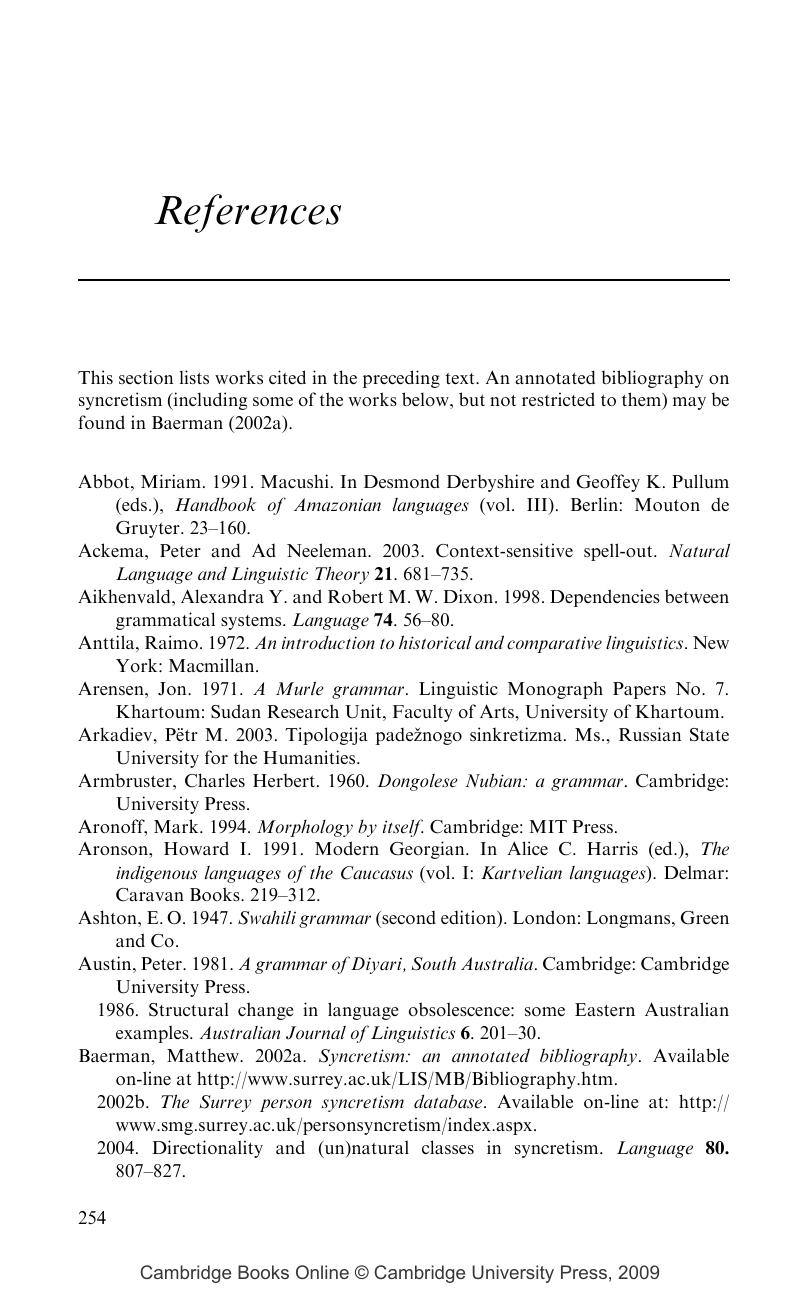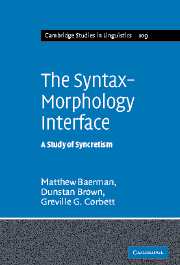Book contents
- Frontmatter
- Contents
- Preface
- List of abbreviations and symbols
- 1 Introduction
- 2 Characteristics of syncretism
- 3 Cross-linguistic typology of features
- 4 Formal representation
- 5 Formal framework and case studies
- 6 Conclusion
- Appendix 1 Case syncretism in the World Atlas of Language Structures sample
- Appendix 2 Person syncretism in the World Atlas of Language Structures sample
- Appendix 3 Syncretism in two-place verbs in the World Atlas of Language Structures corpus
- Appendix 4 DATR fragment for Dhasaanac case study
- Appendix 5 DATR fragment for Dalabon case study
- Appendix 6 DATR fragment for Russian case study
- References
- Author index
- Language index
- Subject index
- References
References
Published online by Cambridge University Press: 22 September 2009
- Frontmatter
- Contents
- Preface
- List of abbreviations and symbols
- 1 Introduction
- 2 Characteristics of syncretism
- 3 Cross-linguistic typology of features
- 4 Formal representation
- 5 Formal framework and case studies
- 6 Conclusion
- Appendix 1 Case syncretism in the World Atlas of Language Structures sample
- Appendix 2 Person syncretism in the World Atlas of Language Structures sample
- Appendix 3 Syncretism in two-place verbs in the World Atlas of Language Structures corpus
- Appendix 4 DATR fragment for Dhasaanac case study
- Appendix 5 DATR fragment for Dalabon case study
- Appendix 6 DATR fragment for Russian case study
- References
- Author index
- Language index
- Subject index
- References
Summary

- Type
- Chapter
- Information
- The Syntax-Morphology InterfaceA Study of Syncretism, pp. 254 - 270Publisher: Cambridge University PressPrint publication year: 2005



